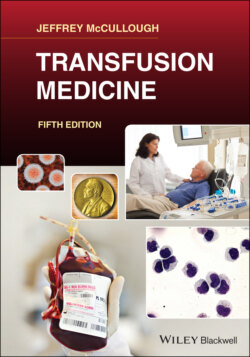Читать книгу Transfusion Medicine - Jeffrey McCullough - Страница 94
Adverse reactions
ОглавлениеReactions have been associated with approximately 4% of blood donations, although many either occur or are first noticed when the donor is off‐site, which complicates accurate reporting. Fortunately, most reactions are not serious [55–57]. Minimizing donor reactions begins with the selection of the site for blood collection, the staff training, the general treatment the donor receives from the staff, and the ambience of the blood collection situation. These factors are important because reactions increase when the blood collection situation is crowded, noisy, or hot, or when the donor endures a long wait. Donors who have reactions are more likely to be younger [58, 59], to be unmarried, to have a higher predonation heart rate and lower diastolic blood pressure, and to be first‐time donors or to have donated fewer times than donors who do not experience reactions [59].
Adverse reactions to whole blood donation can be categorized generally as those due to: (a) hypovolemia, (b) vasovagal effects, and (c) complications of the venipuncture (Table 4.4). The most common symptoms of reaction to blood donation are weakness, cool skin, diaphoresis, and pallor. A more extensive but still moderate reaction may involve dizziness, pallor, hypertension, hypotension, and/or bradycardia. Bradycardia is usually taken as a sign of a vasovagal reaction rather than hypotensive or cardiovascular shock, in which tachycardia would be expected. The vasovagal syndrome can have detrimental effects on blood donors and the blood supply [60, 61]. The most common cause of these symptoms is probably due to the psychological stress of the situation or to neurologic factors rather than hypovolemia caused by loss of blood volume. In the past, a common response to a donor reaction was to have the donor rebreathe into a paper bag. This is effective only if the lightheadedness is due to hyperventilation and reduced bicarbonate levels. Most reactions do not have this basis, and the paper bag may only add to the tension of the situation. This is not recommended as routine practice, but should be reserved for situations in which it seems clear that hyperventilation is a major part of the reaction. Other systemic reactions may include nausea, vomiting, and hyperventilation, sometimes leading to twitching or muscle spasms, convulsions, or serious cardiac difficulties. These kinds of serious reactions are rare. Several strategies have been used to reduce donor reactions, especially in populations of young, first‐time donors, such as 16‐to 17‐year‐old students, who are seen as important to building a future donor base [62]. Intervention strategies studied include predonation education, distraction, and additional water intake, which can reduce the rate of vasovagal reactions [63–65]. Minimizing donor reactions is very important because donors who experience adverse reactions are less likely to return [60, 66, 67].
Table 4.4 Adverse reactions to whole blood donation.
| Hypovolemia | Syncope |
| Lightheadedness | |
| Diaphoresis | |
| Nausea | |
| Vomiting | |
| Vasovagal effects | Syncope |
| Bradycardia | |
| Diaphoresis | |
| Pallor | |
| Venipuncture | Hematoma |
| Nerve injury | |
| Local infection | |
| Thrombophlebitis |
No clinically significant positive or negative effects have been proved for long‐term, even multigallon, donors of whole blood, although there has been interest in determining impact on areas such as cardiovascular health, occurrence of malignancy, and immunologic response. In recent years, taking precautionary measures to protect young donors from iron depletion has become an area of interest, because there are concerns regarding neurologic development of adolescent donors and possible sequelae if young females become pregnant [68, 69].
